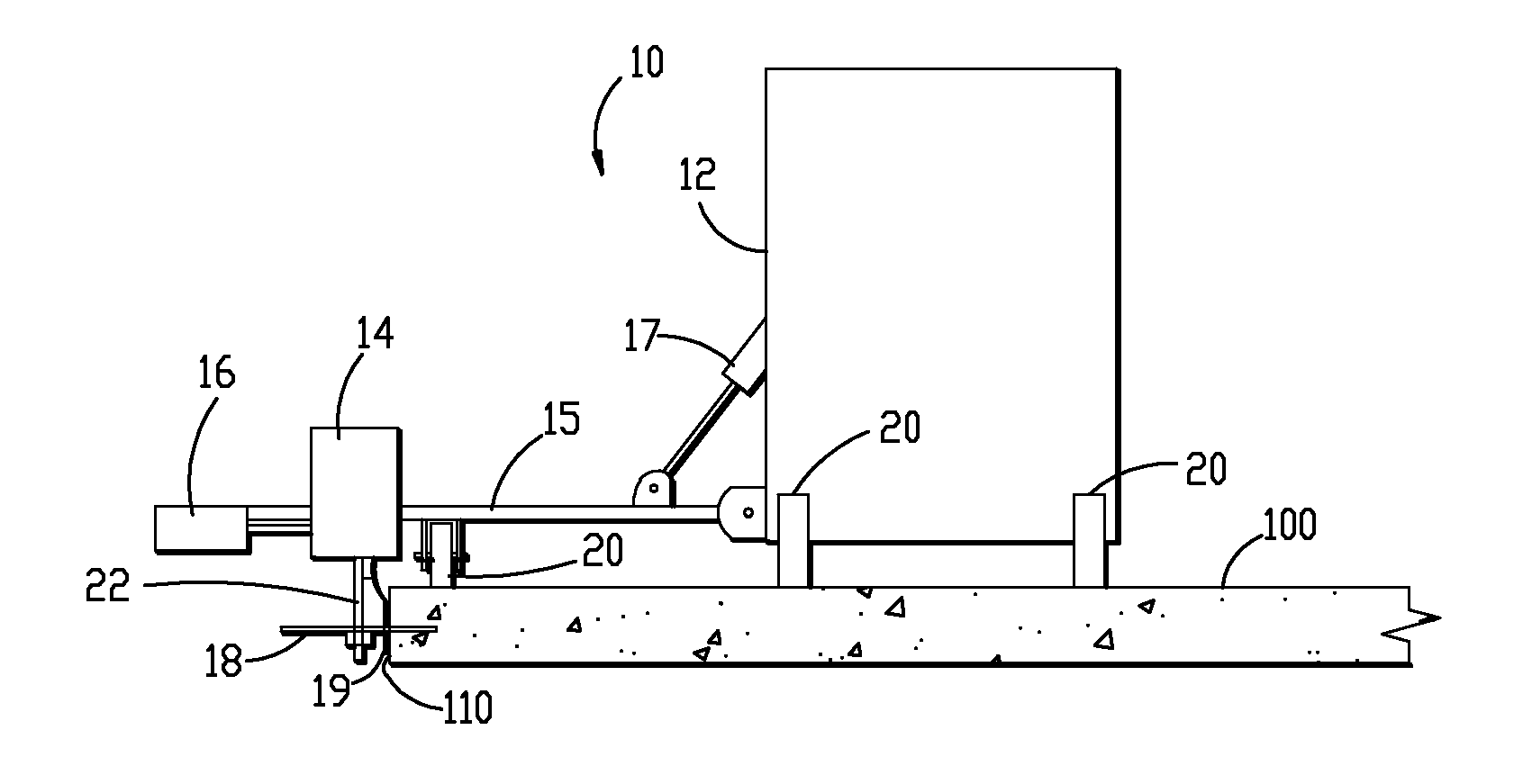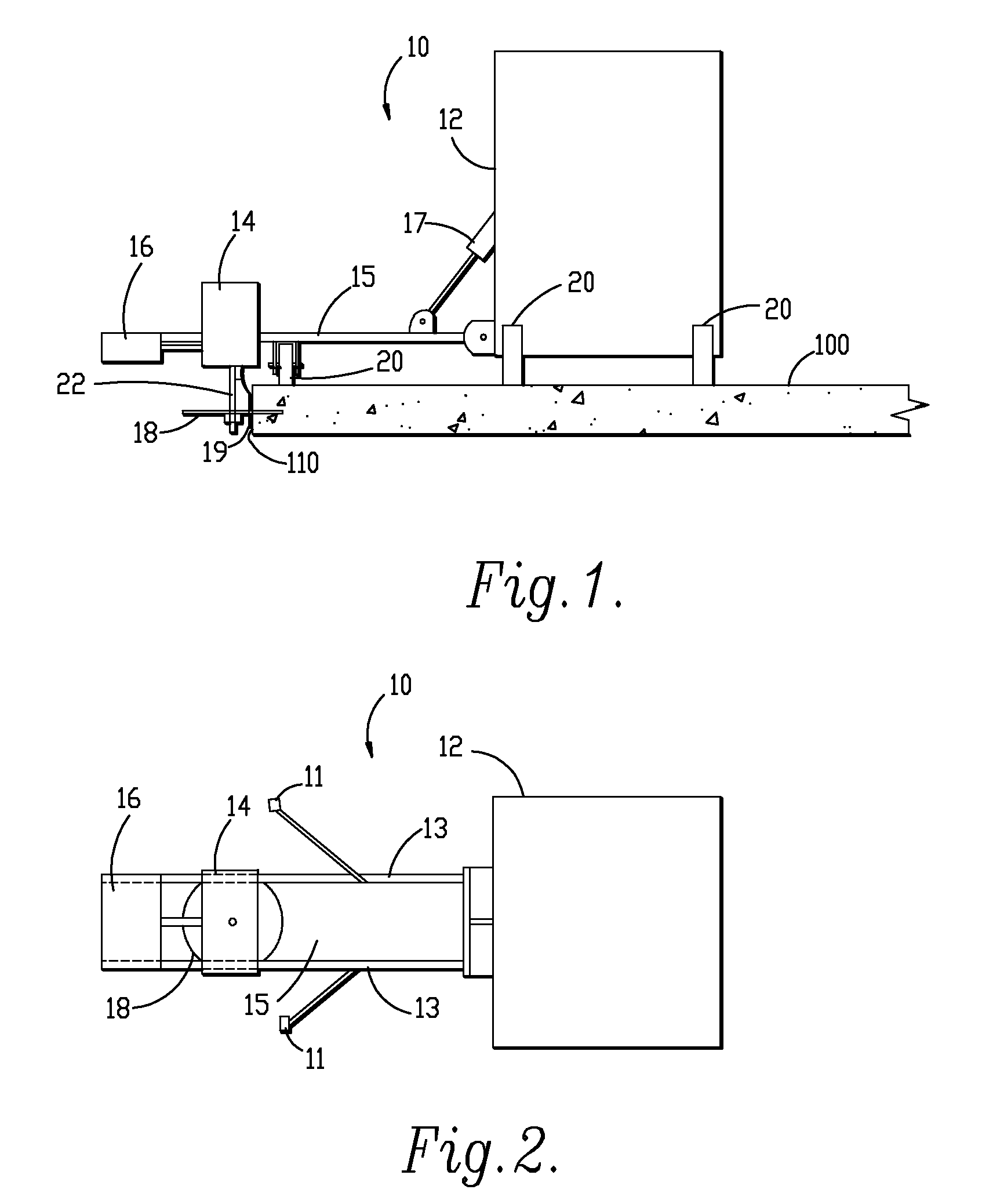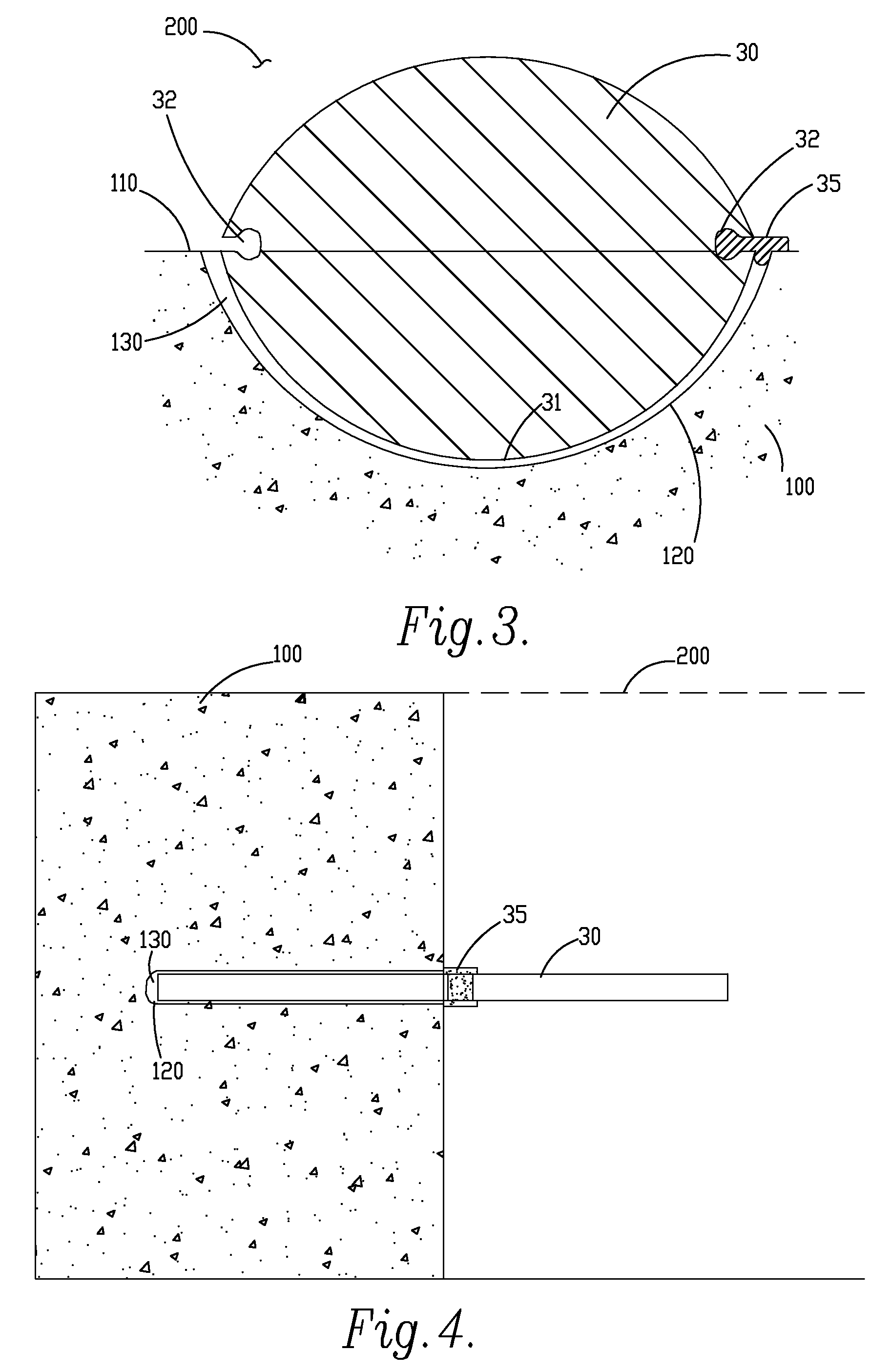System and Method for Concrete Slab Connection
a concrete and system technology, applied in the direction of roads, manufacturing tools, roads, etc., can solve the problems of problems such as cracking of the concrete slab, damage to the joints or joints between adjacent sections, etc., to achieve the effect of reducing the amount of labor required and fast and cleaner drilling
- Summary
- Abstract
- Description
- Claims
- Application Information
AI Technical Summary
Benefits of technology
Problems solved by technology
Method used
Image
Examples
Embodiment Construction
[0028]As required, a detailed embodiment of the present inventions is disclosed herein; however, it is to be understood that the disclosed embodiment is merely exemplary of the principles of the invention, which may be embodied in various forms. Therefore, specific structural and functional details disclosed herein are not to be interpreted as limiting, but merely as a basis for the claims and as a representative basis for teaching one skilled in the art to variously employ the present invention in virtually any appropriately detailed structure.
[0029]Referring to FIGS. 1 and 2, a plunge-cut saw unit (10) of the instant invention is shown. As shown in FIG. 1, saw unit 10 travels over the top of preexisting concrete slab 100 on wheels 20 following edge 110 of slab 100. The height of cutting blade 18 is adjustable to control the vertical depth at which the cut is made into slab 100 by raising and lowering mechanism (not shown) which raises and lowers drive unit 14 along with saw blade ...
PUM
| Property | Measurement | Unit |
|---|---|---|
| shape | aaaaa | aaaaa |
| height | aaaaa | aaaaa |
| strength | aaaaa | aaaaa |
Abstract
Description
Claims
Application Information
 Login to View More
Login to View More - R&D
- Intellectual Property
- Life Sciences
- Materials
- Tech Scout
- Unparalleled Data Quality
- Higher Quality Content
- 60% Fewer Hallucinations
Browse by: Latest US Patents, China's latest patents, Technical Efficacy Thesaurus, Application Domain, Technology Topic, Popular Technical Reports.
© 2025 PatSnap. All rights reserved.Legal|Privacy policy|Modern Slavery Act Transparency Statement|Sitemap|About US| Contact US: help@patsnap.com



